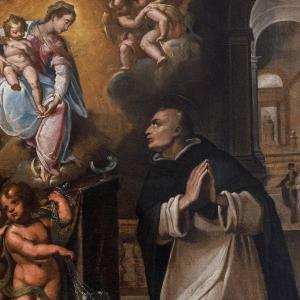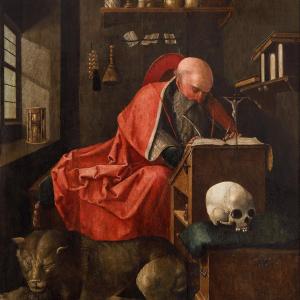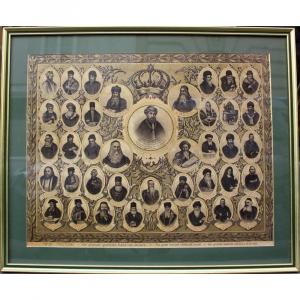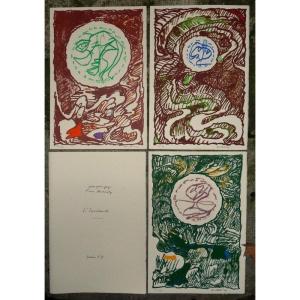FRIEDRICH DER STREITBARE
CARL HEINRICH RAHL
Heidelberg 1779 – 1843 Vienna
Lithograph on paper, inscribed "C. Rahl pinx." and "C. Mahlknecht sc. Viennae", with title in the center "FRIEDRICH DER STREITBARE."
22.5 x 15.5 cm / 8.9 x 6.1 in, with sheet 28.5 x 22 cm / 11.2 x 8.7 in
PROVENANCE
Private collection, Vienna
THE HEROIC IMAGE OF A SAXON ELECTOR
In the decades following the fall of Napoleon, the German-speaking world experienced a resurgence of interest in its medieval and early modern past. Artists and engravers turned to historic figures not simply to document them, but to elevate them as emblems of national identity and virtue.
This powerful lithograph, designed by Carl Heinrich Rahl and engraved by Carl Mahlknecht in Vienna, portrays Friedrich der Streitbare (Frederick I the Warlike), Elector of Saxony, not in a static, courtly pose, but as a warrior in motion. His body turns as if on the battlefield; his gaze confronts the viewer with defiance and resolution. The plumed helmet and shield evoke both historical accuracy and romantic heroism, aligning this portrayal with the patriotic tastes of the early 19th century.
Frederick I (1370–1428), of the House of Wettin, played a decisive role in the turbulent politics of his time. As Margrave of Meissen and later Elector of Saxony, he fought in the German Town War, supported Rupert III against King Wenceslaus, and was a central figure in the struggle against the Hussites. For his military victories, Emperor Sigismund rewarded him with the Duchy of Saxony-Wittenberg in 1423. Together with his brother, he also founded the University of Leipzig in 1409.
The image presented here moves beyond conventional historiography. While earlier depictions (such as those by Cranach) emphasized dynastic or ceremonial representation, Rahl’s version reflects the ideals of a new era—an era that sought in the past the virtues of courage, loyalty, and leadership.
CARL HEINRICH RAHL
Carl Heinrich Rahl was a German-Austrian painter, engraver, and professor at the Vienna Academy of Fine Arts. Born in 1779 near Heidelberg in a family of textile printers, he received his early training as a jeweler, where he also learned the art of engraving. In 1799 he moved to Vienna, where he completed his artistic education and became known as a master of reproductive engraving. In 1815 he joined the Academy, became a court engraver in 1829, and in 1840 was appointed full professor.
Rahl’s engravings—after both old masters and contemporary paintings—were celebrated for their precision and expressive quality. Works like The Oath of Rütli and his scenes from Swiss history exemplify the patriotic and historical spirit of his era. In Friedrich der Streitbare, he departs from traditional depictions of the Saxon elector, presenting instead a romantic and heroic vision, in tune with the spirit of German historicism in the first half of the 19th century.
























 Le Magazine de PROANTIC
Le Magazine de PROANTIC TRÉSORS Magazine
TRÉSORS Magazine Rivista Artiquariato
Rivista Artiquariato
